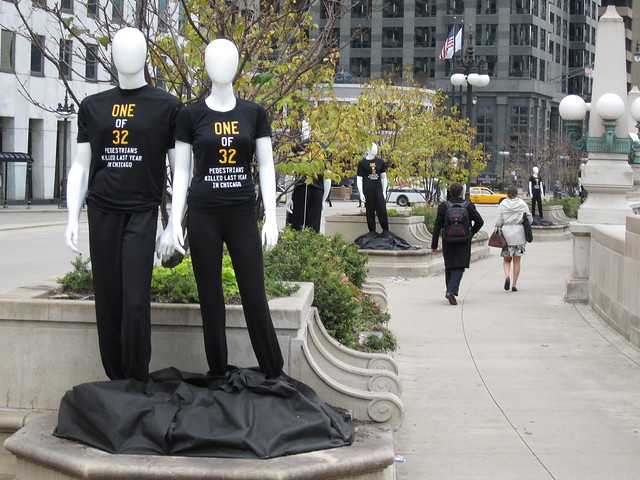[flickr]photo:625959597[/flickr]
Yesterday I posted this statement about automobile crashes on my Facebook wall:
36.9% of all automobile crashes (including the ones involving pedestrians and bicyclists) in 2010 were labeled “hit and run” by IDOT.
I pulled this information from the crash data I’ll be analyzing and visualizing with three other people.
The first comment I received asked if that number was related to the number of uninsured motorists in Chicago. I found a report published by the Insurance Research Council (IRC; funded by property casualty insurance companies) that estimated, for 2009, 15% of drivers in Illinois do not have insurance. The estimates were “based on the ratio of uninsured motorist insurance claim frequency to bodily injury claim frequency.” I don’t know if this is a good, or the best measurement technique, but it’s one way that we can compare annual data. It seems this method will not include crashes where neither driver has insurance (driver or medical), or when no claim is made against the uninsured driver.
Then today I was at MicroCenter in Logan Square shopping for a computer hard drive. Someone else was standing next to me looking at some of the same products. He got a phone call. It went something like this. (Note: I did not hear anything the caller said – I’m making it up based on his responses.)
- Caller: What are you doing?
- Man: Shopping for hard drives.
- Caller: How’d you get there?
- Man: I’m borrowing this person’s car.
- Caller: Let’s go somewhere.
- Man: No, I don’t care, I’m not taking you on a joy ride. I haven’t had a license for three years. If I get pulled over, I’m going to jail.
What the heck does one do in this situation? Do you call the police and report that a driving crime is about to happen?
Simply because he has no license doesn’t make him a bad driver, but his tone and his message to the caller indicated, to me, that his license to drive was taken from him. But that was a little deterrent. He calculated his risk and concluded it was low enough to borrow someone’s car and drive to the store to buy a hard drive, but that driving any further (taking the caller on a joy ride) was too risky. There’s probably some correlation that the longer distance one drives, or the more time one drives, the more likely they will be pulled over. But for there to be that correlation, police officers would have to be 1) randomly distributed across the region where this person is driving, and 2) paying attention to driver infractions.
As long as the man avoids making errors and ensures the borrowed car meets legal requirements to drive (lights, registration, etc…), then he will avoid being pulled over. Since the IRC estimates that 15% of drivers in Illinois have no insurance, it may be prudent for the police to randomly pull over a certain percentage of drivers each year simply to check for valid insurance. When there’s a crash with an uninsured driver, that infraction of driving without insurance is just as important to public safety as the action that caused the crash. Not every insured driver carries uninsured motorist insurance to protect themselves, monetarily, from this situation.
I searched Flickr for “uninsured driver” and this was one of the photos that appeared. The driver of the white car hit the dark car in the foreground. The photo was posted by one of the people in the dark car and says that the driver of the white car did not have driving insurance. Photo by vikisuzan in Kent, Washington.
